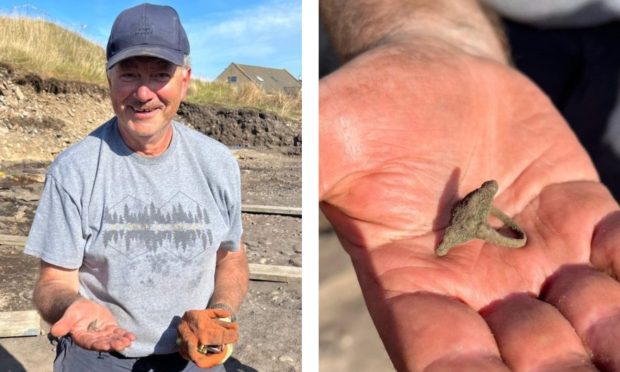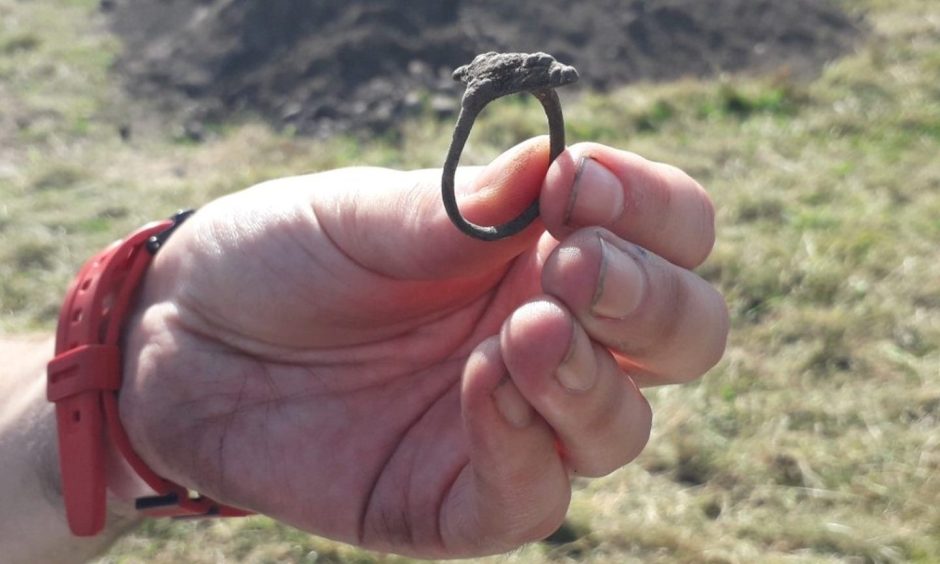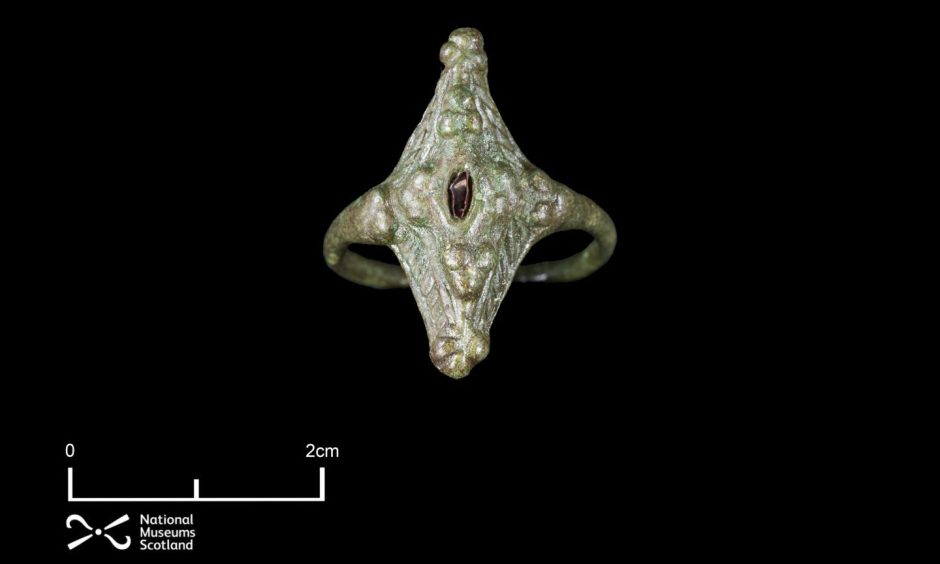A retired engineer born and bred in Moray has returned to his hometown to make a historic discovery.
John Ralph pulled a 1,000-year-old Pictish ring from the ground during a dig led by the University of Aberdeen at Burghead Fort.
The kite-shaped ring with a garnet or red glass centre had lain uncovered for centuries.
And the 68-year-old former engineer who found it has revealed it was a thrill to be involved in the digs.
A former Burghead Primary pupil, Ralph left the village at 18 to study at Aberdeen University.
He graduated and later achieved his PhD from the university, with 2024 marking 50 years of association with the institution.
John, who now stays in Linlithgow, said “I had recently retired and saw a Facebook post looking for volunteers to help with the Burghead excavations.
“My sister still lives in Burghead and it sounded interesting so I thought ‘why not’.
Pictish ring discovered
“It can be quite challenging at times. I like to call it ‘extreme gardening’! But it is a wonderful combination of physical and thought-provoking work.
“It is a real thrill to dig up an artefact in the knowledge that you are probably the first person to see it for 1000-1500 years.
Gordon Noble, Professor of Archaeology at Aberdeen University and leader of the excavation work praised the find.
Professor Noble said: “It was truly remarkable. He was digging and then came over and said ‘Look what I found’.
“What he handed over was incredible.”
Archaeological find at Burghead Fort
Currently, the ring is with the National Museum of Scotland’s Post-excavation Service for analysis.
Susan O’Connor, Head of Grants at Historic Environment Scotland, said: “This find is hugely significant for what it tells us about Pictish lives and society.
“We’re excited to find out more once our colleagues in the National Museum have finished their investigations.”
The public will be able to learn more about this find and the ongoing work at Burghead at an Open day to be held at the fort on Sunday, September 8 from 10am to 4pm.
Here they can talk to archaeologists, view Pictish stone carvings, a weapons display, and see traditional leather working skills.



Conversation